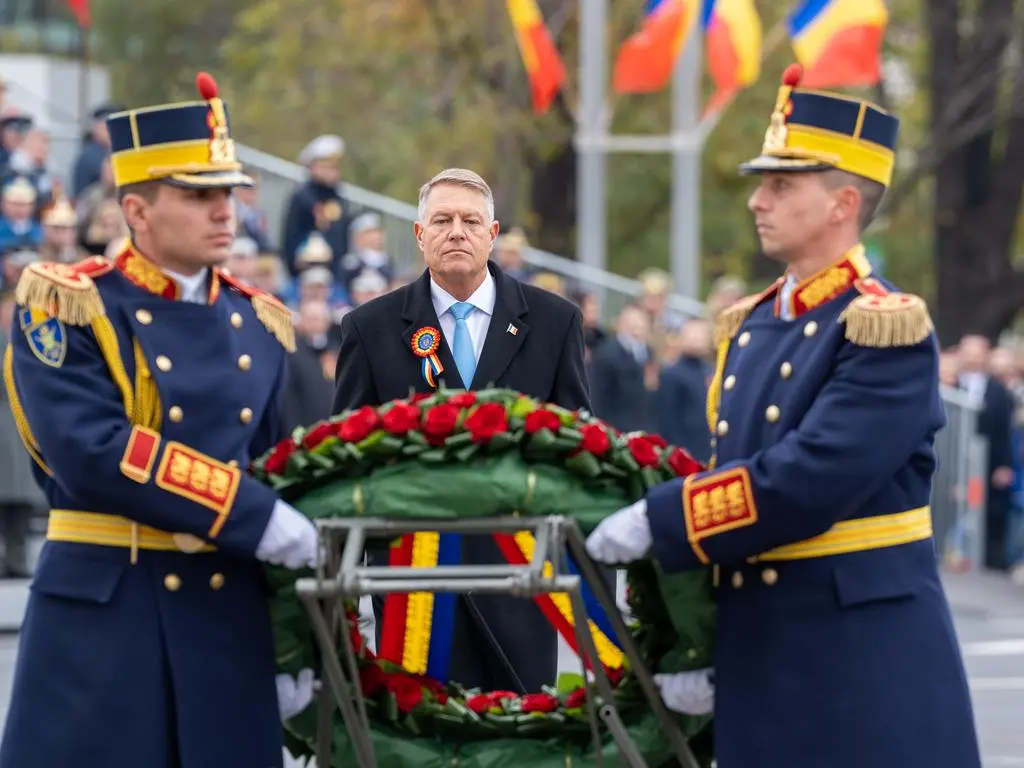Why are more than a million Hungarians very sad today, while Romanians celebrate?
1 December is Romania’s most important national day, during which they celebrate the ‘reunification’ with Transylvania, where even today more than a million Hungarians live. But why is 1 December so important, and why is it a sad anniversary for Hungarians living there?
Hungary was part of the Austrian-Hungarian Empire during WWI. That meant Hungarian soldiers fought shoulder to shoulder with their Austrian, Czech, Slovakian, Romanian, and Serbian allies (the empire’s nationalities) against Serbia, Romania, Russia and Italy. Interestingly, Hungary’s prime minister, István Tisza, was against going to war against Serbia after the assassination of Franz Ferdinand in Sarajevo. Tisza knew that a world war could bring them to the brink of destruction of the Austro-Hungarian Empire.
He was correct. After the lost war, all nationalities decided to leave the dualist monarchy. Some had to create or recreate their countries after hundreds of years of union like Croatia, the Czechs or the Slovaks. Meanwhile, others could join their home country, like the Serbs or the Romanians.
Transylvania, the Tiszántúl, the Partium and the Banat that Romania claimed from Hungary were at least multiethnic in 1918 autumn. Millions of Romanians lived in these regions but were not in a majority, only in a few towns and lots of villages, mainly on the border of Transylvania, the Banat and Partium.
Of course, nobody was interested in creating borders following the ethnic maps. In Versailles, the French were given the power to decide about Central Europe’s fate, and wanted strong allies in this region. Therefore, they created a big and strong Romania, Yugoslavia and Czechoslovakia alongside Poland.
French decided about Hungary’s fate
However, they did not inform the newly-formed Hungarian government led by Count Mihály Károlyi. Károlyi wanted peace, but he also wanted to preserve the old borders of the Hungarian Kingdom. He disbanded the army and hoped the new world order would follow US President Wilson’s idea about a Commonwealth. As a result, Hungarian troops did not withstand the conquering Romanian army in Transylvania until the end of November 1918.
Furthermore, since they hoped territorial autonomy would be enough for Romanians (Serbians, Ruthenians, Slovakians), the Hungarian government supported the Great National Assembly of Alba Iulia (Gyulafehérvár) of the Romanians. For example, Hungarian State Railways (MÁV) trains carried the partakers.
There, Romanian delegates voted for the reunification of Romania with Transylvania, Partium, Banat and even the Tiszántúl. On the other hand, they granted autonomy to the Hungarians (and Germans) living in the new ‘Romanian Empire’.
Such assemblies might be celebrated by a nation but rarely played a decisive part in history. In short, Paris decided Romania’s and Hungary’s fate not Alba Iulia. That is clear from the fact that on 22 December, there was a similar assembly for the Hungarians in Kolozsvár (Cluj Napoca), where Hungarians voted for remaining in Hungary. Nobody cared.
Romanians did not keep their promises
The French decided in Versailles that Romania may get Transylvania, the Banat and Partium. However, Bucharest could not extend its rule to the Tiszántúl. As a result, Szeged and Debrecen or Nyíregyháza remained part of Hungary.
However, Romanians believe that their great national assembly played an important part in 1918. That is why they celebrate it while most Hungarians remain home on this day because they have nothing to celebrate. They did not receive territorial or any other kind of autonomy because nobody ever kept their promises made in Alba Iulia. Instead, they constantly fight to be able to use their mother tongue and cultural institutions, and preserve their education system.
Romania had not become a home for most Hungarians living there.
And why do Romanians think what happened was a reunification? In Romanian history, the Romanians are the descendants of the Romans conquering Dacia in the 2nd century AD. Therefore, they believe they were in Transylvania earlier than the Hungarians, who arrived ‘just’ in the 9th century.
Scholars do not accept the Romanian explanation of that story. They believe Romanians came from somewhere in the Balkans in the 12th and 13th centuries. The first written sources from the Transylvanian Romanians are from the 13th century, following the Mongol invasion.
Read also:
please make a donation here
Hot news
Superb: New flight from Budapest announced to a Western European metropolis
Hungarian public media to broadcast Chinese propaganda movies?
The Orbán cabinet believes provided they lost the EP elections, the war would not end
Final countdown: New Danube bridge to be passable soon!
PM Orbán’s political director: European Union is tool for Hungary’s progress
What happened today in Hungary? — 10 May, 2024





15 Comments
The homeland of Transylvania which has its roots in the soul of Transylvanian Hungarians in the condition of Romanian society, which 100 years have not succeeded in erasing. The truth of History is that evil tendencies dissolve themselves in the shadow of their anti-human actions like rivers wash their banks beneath them … Historia est magister vitae …
When a country loses wars, others decide its future.
Most of the areas that are not Hungary today that were Hungary yesterday were trying to get out from Hungary all along. This is reality.
Some fake old news in this article. În 1918 romanians were not in majority “in some towns and villages”. They were the ABSOLUTE MAJORITY in Transylvania. This happened after years and years of forced magyarization, a subject that is delicated avoided by hungarian propaganda. The number of hungarians living in Transylvania was also the result of intense colonizations, they were not there before.
1910 – 53% romanians, 31% hungarians (hungarian census, where people who declared they understand hungarian were considered hungarians 🙂
1919 – 57% romanians, 27% hungarians.
Dear John, don’t make hungarians sad, they are where they are supposed to be, by the powerful rules of history. And check Wikipedia for universal facts, it’s easy.
Too many Hungarians think that History starts from AD 896, as if nobody lived in the “Carpathian basin” before the arrival of the Magyars. Such ridiculous belief is their limitation, that makes impossible for them to come to terms with the defeat in WW1, in which Hungary took active part, and with its inevitable consequences.
Transylvania is a Hungarian territory Romania robbed this country unfortuanetely it’s denied by the Romanians so this so called Romanian national day is irrevelant. So the only language which be spoken in Transylvania is Hungarian.
This remark is an awful offense Sir you ignore or refuse to accept the truth the books you read are lies.
All these commentaries are lies Transylvania is still part of Hungary, in the last 100 years did everything to destroy Hungarian culture but Romanians are still big losers.
Hungarians never constituted the majority of the population of Transylvania, not even in pre-WW1 days.
In the last census of the Austro-Hungarian empire Romanians made up over 50 % of the population. This is a fact that no educated Hungarian can deny.
For that one million Hungarians, there currently are five million Romanians in Transylvania.
Even the wet dream of Transylvania returning to Hungary would pretty fast turn into a nightmare: Second Big Hungary as a multinational state, with 11M Hungarians and 5M Romanians. Romanian as 2nd official language, Romanian cultural protections, Romanian representation in government (imagine a Romanian party, on the same construct as RMDSZ, winning 30% of votes at every election) etc..
These facts about forced “Hungarianization” of areas that Victor claims are “Hungarian” is true. From Ukraine to Slovakia to Serbia to Croatia, these areas were trying to get out from under this forced integration for over 100 years and were successful after the folly of WW1 and WW2. By Victors logic all countries that speak English are . . . part of the UK?
A lot of hubris from the author part to talk in the name of more than 1 milion people(which are not hungarians, but romanians of hungarian ethnicity).
I think a lot of them are happier to live nowadays in Romania than in the iliberal Hungary of Orban, both liberties wise and econonomical wise(border side of Romania is more developed than the hungarian counterpart).
A real historic point zero would be if Romania and Hungary would unite and become relevant, instead of being puppets and slaves to Eastern masters and Western empires, Hungarians mostly and sadly. After all they lived and still live together in good understanding. Assume the mistakes of the past and have a future….
Dear Atevistu commenter,
How dare you call history fake news while citing Wikipedia as a creditable source?
Your comment reeks of Dacomania!
“Instead, they constantly fight to be able to use their mother tongue”
You little chipmunk! Literally everybody can speak hungarian if they wish to, and parts of transilvanya are heavily bilingual.
I have attended many magyar events and people that attend are also bilingual romanians. No one is getting persecuted for talking in hungarian.
The only requirement from the public offices is that you know romanian also! If you live in France, people expect you to speak french, if you live Hungary, people expect you to know hungarian. If you have a romanian birth certificate you have to be able to speak romanian too.
And dint get me started about how my szekler brothers are treated by you people in hungary!